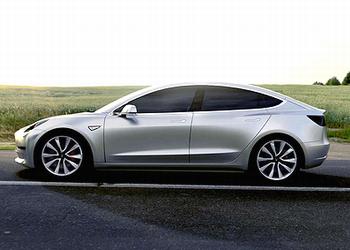
CAMBRIDGE, Massachusetts, October 5, 2016 (ENS) – If you believe low carbon emitting cars are expensive to drive – think again.
New research from the Massachusetts Institute of Technology, MIT, shows that when operating and maintenance costs are included in a vehicle’s price, autos emitting less carbon are among the market’s least expensive options, on a per-mile basis.
MIT researchers took a detailed look at 125 U.S. auto models and found those emitting less carbon are the least expensive to drive overall.

“If you look in aggregate at the most popular vehicles on the market today, one doesn’t have to pay more for a lower carbon-emitting vehicle,” says the study’s senior author Jessika Trancik, the Atlantic Richfield Associate Professor in Energy Studies at the Institute for Data, Systems, and Society at MIT.
“In fact,” she said, “the group of vehicles at the lower end of costs are also at the lowest end of emissions, even across a diverse set of alternative and conventional engines.”
The study evaluates the U.S. automotive fleet — as represented by these 125 model types — against emissions-reduction targets the U.S. has set for the years from 2030 to 2050.
Overall, the research finds, the average carbon intensity of vehicles that consumers bought in 2014 is more than 50 percent higher than the level it must meet to help reach the 2030 target.
The lowest-emitting autos already have surpassed the 2030 target.
“Most hybrids and electric vehicles on the road today meet the 2030 target, even with today’s electricity supply mix,” Trancik observes.
The new paper, “Personal Vehicles Evaluated against Climate Change Mitigation Targets,” is being published in the currentissue of the journal “Environmental Science and Technology.”
The research group is also releasing the results in the form of an app that anyone can use to evaluate any or all of the 125 vehicle types.
Their CarbonCounter app allows you to look up emissions rates for your vehicle or one you are considering buying or leasing.
“Private citizens are the investors that will ultimately decide whether a clean-energy transition occurs in personal transportation. It’s important to consider the problem from the viewpoint of consumers on the ground,” Trancik says. “The goal here is to bring this information on the performance of cars to people’s fingertips, to empower them with the information needed to make emission- and energy-saving choices.”
Along with Trancik, the authors of the study are Marco Miotti, a doctoral student in IDSS; Geoffrey Supran PhD ’16, recent graduate in MIT’s Department of Materials Science and Engineering and now a postdoc in IDSS; and Ella Kim, a doctoral student in MIT’s Department of Urban Studies and Planning.
Transportation accounts for about 28 percent of greenhouse gas emissions in the United States, and about 13 percent of emissions worldwide.
Within the transportation sector, light-duty vehicles – passenger cars, and trucks with 12 seats or fewer that meet certain weight measurements – account for about 60 percent of emissions.
“To enable a fair comparison between cars of all technologies, we include all emissions coming from the fuel, electricity, and vehicle production supply chains,” Miotti says.
The researchers’ chart yields some clear trends. Smaller hybrids and electric vehicles such as the Toyota Prius and Nissan Leaf fare very well and are among the cheapest per mile driven. Small combustion-engine cars are also low in cost, but emit up to 40 percent more greenhouse gases than their hybrid and electric counterparts.
The Chevrolet Suburban, by contrast, is among the most expensive and highest-emitting popular vehicles. Luxury sedans such as the Mercedes E350, the study found, are more expensive per mile than the Suburban, but emit about two-thirds as much carbon.
“Our results show that popular alternative-technology cars such as the Nissan Leaf can already save a considerable amount of emissions today, while being quite affordable when operating costs are considered,” Miotti observes. “Notably, the benefit of the efficient electric powertrain far outweighs the added emissions of manufacturing a battery.”
To reach a wider audience, the team developed an app with which people can look up their current car, or a car they are considering buying or leasing, and see how it performs in terms of costs and carbon emissions.
Vehicle costs and emissions vary regionally, as the study notes. For instance: Western states draw from renewable energy +/*sources (mostly solar and wind) to a greater extent than, say, states in the Midwest. On aggregate, therefore, plug-in electric vehicles will draw upon cleaner sources of electricity in the West than in the Midwest, and produce lower emissions overall.
On a national basis, though, the study reinforces the need to continue modernizing the country’s vehicle fleet and decarbonizing it in the next few decades.
Trancik says, “To meet mid-century climate policy targets, what we would likely need to see is a near-complete electrification of vehicles within a few decades, alongside a decarbonization of electricity.”
Funding for the study was provided by The New England University Transportation Center at MIT, under a Department of Transportation grant; the Singapore National research Foundation through the Singapore-MIT Alliance for Research and Technology Centre; the Reed Foundation; and the MIT Leading Technology and Policy Initiative.
Copyright Environment News Service (ENS) 2016. All rights reserved.
PHOTO: The Tesla Model 3 electric car will begin pricing at $35,000. The basic car will accelerate 0-60 mph in less than six seconds, has an electric range of at least 215 miles per charge. Expect deliveries by year end 2017. (Photo by Automotive Rhythms)
© 2016, Environment News Service. All rights reserved. Content may be quoted only with proper attribution and a direct link to the original article. Full reproduction is prohibited.
